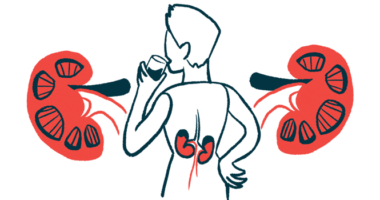Switch to Ultomiris a Success for aHUS Patient on Soliris Long-term: Case
Ultomiris may be 'therapy of choice' after kidney transplant, researchers say

Ultomiris (ravulizumab) was shown to efficiently manage atypical hemolytic uremic syndrome (aHUS) in a woman in her 30s who had received Soliris (eculizumab) for more than a decade following a kidney transplant, according to a recent case study.
Researchers noted there had previously been only a single reported case of Ultomiris being used in a kidney transplant patient. But “the presented case demonstrates that switching … to [Ultomiris] is safe and effective” for such patients.
“Because ravulizumab-based therapy offers significant health-related quality of life and cost-effectiveness benefits, it may be the therapy of choice for [kidney transplant patients with genetic aHUS],” the team wrote.
The report, “First Report on Successful Conversion of Long-Term Treatment of Recurrent Atypical Hemolytic Uremic Syndrome With Eculizumab to Ravulizumab in a Renal Transplant Patient,” was published in the journal Transplant International.
aHUS is a rare condition characterized by hemolytic anemia, low platelet counts known as thrombocytopenia, and acute kidney failure. Hemolytic anemia occurs when red blood cells are destroyed more quickly than they are produced.
Overactivation of the complement cascade — a network of proteins that help defend the body against disease-causing microbes — is the root cause of the disease. Abnormal complement activity increases inflammation and blood clotting in small blood vessels, especially in the kidneys, ultimately leading to tissue and organ damage.
Most patients carry mutations in genes that regulate the function of the complement cascade. These mutations increase their susceptibility to developing aHUS.
Ultomiris, Soliris for aHUS
Ultomiris and Soliris are the only therapies approved by the U.S. Food and Drug Administration and the European Medicines Agency for aHUS. Both were developed by Alexion Pharmaceuticals, which is now a part of AstraZeneca.
These two treatments have similar mechanisms of action, as they both inhibit a complement protein called C5. However, Ultomiris was designed to allow for less frequent dosing, and as a result, may be less costly and burdensome for patients.
Thus far, the use of Ultomiris in kidney transplant patients has only been reported in one case study. That report described a woman with aHUS and kidney failure, who was successfully treated with the medication over a period of six months.
Now, a team of researchers at the University Hospital of Münster, in Germany, described the case of a 39-year-old woman with aHUS who switched from long-time treatment with Soliris to Ultomiris after undergoing a kidney transplant.
“We present this case report because [Ultomiris] therapy offers improvement in health-related quality of life and greater cost-effectiveness compared with [Soliris] therapy because of the longer interval between infusions,” the researchers wrote.
The woman was diagnosed with HUS at age 3. When she was 24, she developed kidney failure after a relapse, and had to undergo a kidney transplant. Her mother was the organ donor.
Genetic testing revealed she carried mutations in the MCP and complement factor H (CFH) genes.
“Recurrent aHUS attributable to both complement factor mutations requires lifelong anti-C5 treatment due to high risk,” the researchers wrote.
As a result, the woman was treated with Soliris at two-week intervals, or every 14 days, for more than 10 years.
Given the benefits of Ultomiris, her doctors decided to make the switch. She was treated with 3,300 mg of Ultomiris every eight weeks following an induction therapy, with additional administration of 3,300 mg two weeks after the first infusion.
For over a period of 22 months or almost two years, her blood test results remained stable. The levels of kidney function markers, creatinine and the estimated glomerular filtration rate (eGFR), were about the same as those when she was receiving Soliris.
Additionally, her platelet counts and hemoglobin levels were within a normal range. Hemoglobin is the protein that transports oxygen in red blood cells.
The researchers said the woman’s case demonstrated that “switching C5 inhibition” from Soliris to Ultomiris is safe and effective for kidney transplant patients with HUS — “even after decades of therapy with [Soliris].”
Notably, given that patients on Ultomiris are at higher risk of developing meningococcal disease — a potentially life-threatening infection caused by the bacteria Neisseria meningitidis — researchers highlighted the need for vaccination or preventative therapy for this patient population.







